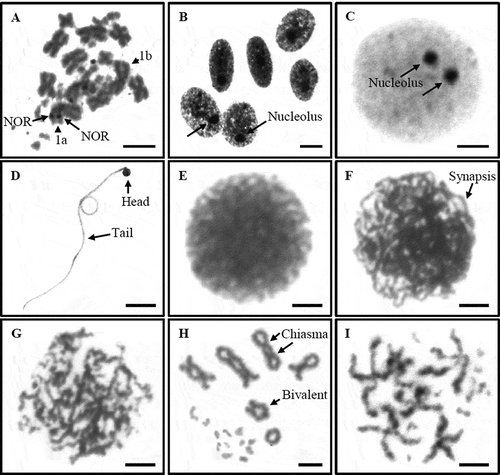Figures & data
Figure 1. General characteristics of Leiolepis belliana (A) and L. boehmei (B) from southern Thailand (scale bar indicates 5 cm).
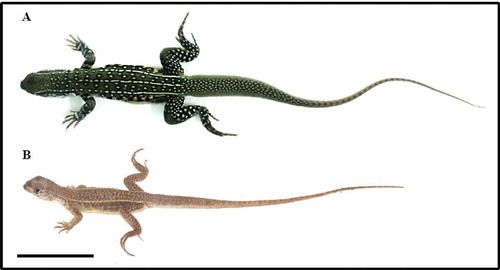
Table 1. Mean length of the short arm chromosome (Ls), long arm chromosome (Ll), total arm chromosome (LT), centromeric index (CI), relative length (RL) and standard deviation (SD) of CI and RL from 20 metaphase cells of male and female Leiolepis belliana, 2n = 36.
Table 2. Mean length of the short arm chromosome (Ls), long arm chromosome (Ll), total arm chromosome (LT), centromeric index (CI), relative length (RL) and standard deviation (SD) of CI and RL from 20 metaphase cells of female Leiolepis boehmei, 2n = 36.
Table 3. A frequency of chromosome number per cell counts of Leiolepis belliana and L. boehmei.
Figure 2. Metaphase chromosome plates and karyotypes of male (A) and female (B) Leiolepis belliana, 2n = 36, by conventional staining technique. The secondary constrictions appear on the subtelomeric region of the long arm of the largest metacentric chromosome pair 1 (arrows). Scale bars indicate 5 µm.
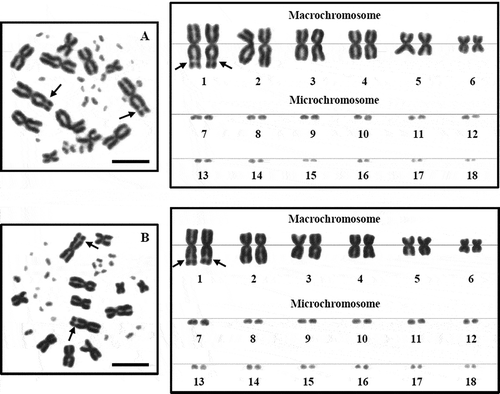
Figure 3. Metaphase chromosome plates and karyotypes of male (A) and female (B) Leiolepis belliana, 2n = 36, by Ag-NOR banding technique. Nucleolar organizer regions (NORs) appear on the subtelomeric region of the long arm of the largest metacentric chromosome pair 1 (arrows). Scale bars indicate 5 µm.
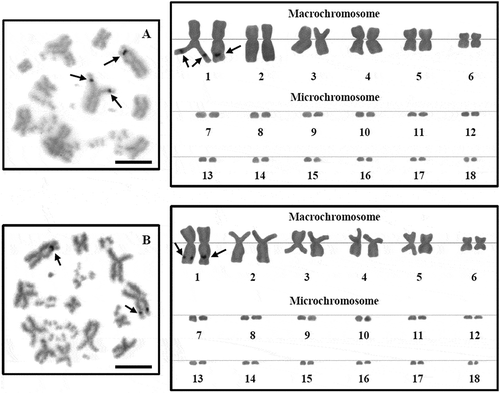
Figure 4. Metaphase chromosome plates and karyotypes of female L. boehmei, 2n = 36, by conventional straining (A) and Ag-NOR banding (B). The secondary constrictions or nucleolar organizer regions (NORs) appear on the subtelomeric region of the long arm of the largest metacentric chromosome pair 1a (arrow). Scale bars indicate 5 µm.
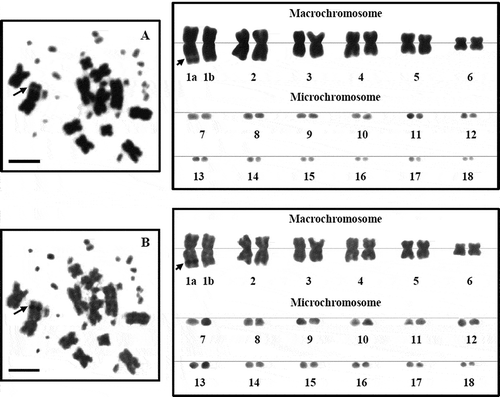
Figure 5. Metaphase plate (A) and prophase (B) of female L. boehmei by silver-NOR banding, meiotic cell of male L. belliana during prophase by silver-NOR banding (C), and other meiotic cells of male L. belliana by conventional staining of mature sperm (D), leptotene (E), zygotene (F), pachytene (G), diakinesis (H), and metaphase II (I). Scale bars indicate 5 µm.
